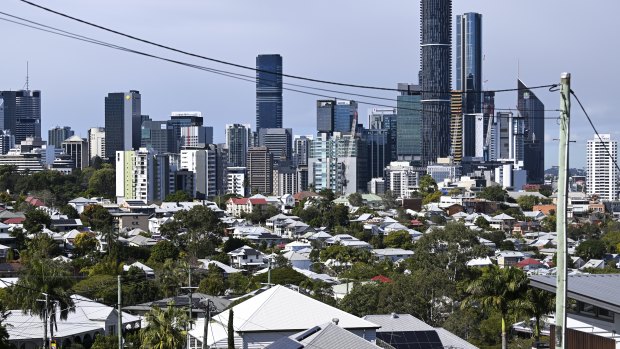Baby drought grips Brisbane as a ‘great contraceptive’ emerges
By Marissa Calligeros, Josh Gordon and Sean Parnell
Brisbane is in the midst of a “baby recession”, with birth rates plunging across inner and middle suburbs as cost-of-living pressures force growing numbers of people to move further out to raise a family.
Analysis from accounting firm KPMG shows 30,250 babies were born in Greater Brisbane last year, a significant reduction on the 2021 post-lockdown baby boom of 33,130 newborns.
That equates to a fertility rate – the average number of children a woman would have in her child-bearing years based on current trends – of 1.61 across Brisbane, compared with 1.44 for Melbourne and 1.57 in Sydney.

Brisbane’s inner and middle suburbs are now deemed too expensive for many young families.Credit: Dan Peled
The baby drought is particularly acute across Brisbane’s inner and middle suburbs, which are now deemed to be unaffordable for younger families.
The lowest fertility rates in 2023 were in Brisbane City (0.53), Fortitude Valley (0.55), and South Brisbane (0.62).
Fertility rates were a stronger indicator of growing families than birth rates, which could fluctuate rapidly from year to year on a suburb level, KPMG economist Terry Rawnsley said.
All 10 of the suburbs in Brisbane with the highest fertility rates were on the city’s fringe, with the top three in Logan Central (2.51), Yarrabilba (2.50), and Chambers Flat-Logan Reserve (2.40).
“Young families are being pushed to the edges of Brisbane, where there is cheaper housing that can accommodate their children,” Rawnsley said.
“The Brisbane CBD and surrounding areas tend to have high-density dwellings, less well-designed for families, and often house cohorts that are less likely to have children in these locations, such as international students. It is no surprise that the fertility rates in these areas are extremely low.”
Nationally, Australia’s fertility rate has been declining for years, from an average of more than two children per woman in 2008 to about 1.6 in 2023, with the ageing population more dependent than ever on strong overseas migration.
Last year, 289,100 babies were born, down 4.6 per cent compared with 2022. It was the lowest annual level since 2006, and the largest annual drop since 1975, when Australia was battling stagflation, a combination of soaring inflation and low growth.
Demographer Matthew Deacon, from Demographic Solutions, said the reality of renting was “acting as a great contraceptive”, along with other pressures faced by younger people, such as higher education debts and the reality of living with parents or in group houses for longer.
“There are young people now who are doing between five and seven years’ more education than their parents, and probably 10 years more than their grandparents,” Deacon said.
“Obviously, that means they are getting around to making decisions such as children much later.”